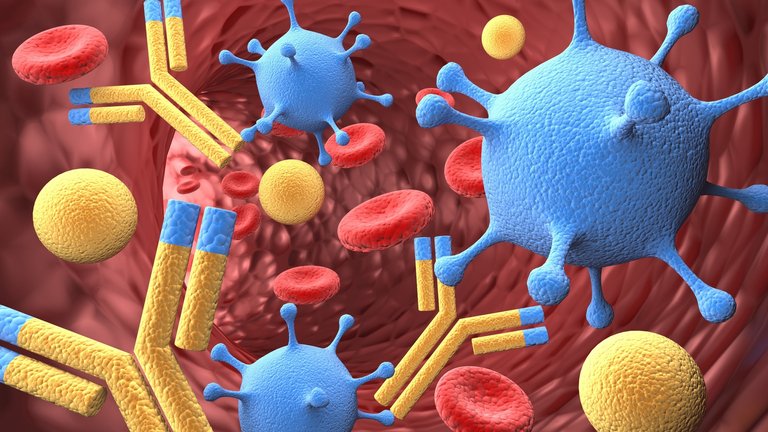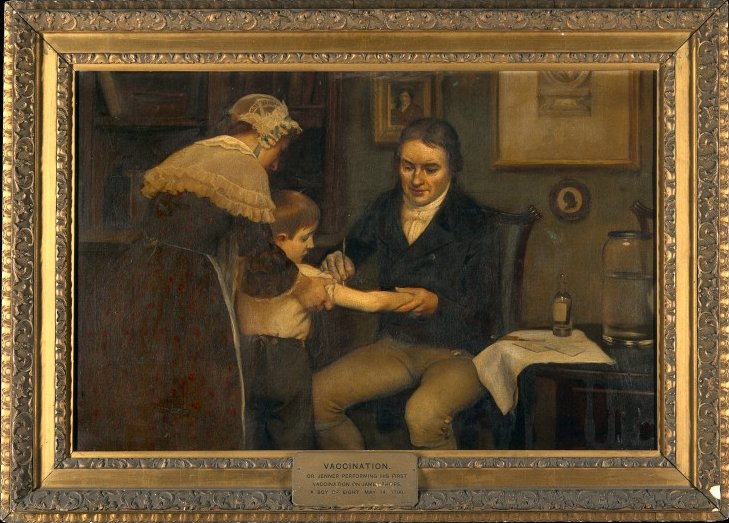Memory Action of the Immune System.
A key feature of the immune system is memory. Immunological memory is the ability of the immune system to quickly and specifically recognize an antigen that the body has previously encountered and initiate a corresponding immune response. Immunological memory occurs after a primary (first) immune response against the antigen. It is thus created by each individual, after a previous initial exposure, to a potentially dangerous agent. Memory is maintained by a subset of B and T lymphocytes called memory cells which can survive for years in the body. Memory cells remain ready to respond rapidly and efficiently to a subsequent encounter with a known pathogen, this is called secondary response. The course of secondary immune response is similar to primary immune response.
History of Immunization
Edward Jenner, a doctor in Berkeley in Gloucestershire, is known to be the founder of immunization. During the 18th century he established the procedure by introducing material from a cowpox vesicle on Sarah Nelmes, a diarymaid, into the arm of a boy named James Phipps. Edward Jenner noticed that some dairymaids seemed protected from smallpox if they had already been infected by the much less dangerous virus that caused cowpox.
What is Immunization?
Immunization is defined as the procedure by which the body is prepared to fight against a specific disease. It is used to induce the immune resistance of the body to a specific disease. Immunization is the process by which an individual's immune system becomes fortified against an agent (known as the immunogen). Immunization is of two types:
- Passive immunization
- Active immunization.
PASSIVE IMMUNIZATION
Passive immunization or immunity is produced without challenging the immune system of the body. It is done by administration of serum or gamma globulins from a person who is already immunized (affected by the disease) to a non-immune person. It is where pre-synthesized elements of the immune system are transferred to a person so that the body does not need to produce these elements itself. Passive immunization is acquired either naturally or artificially.
Passive Natural Immunization
Passive immunization occurs physiologically, when antibodies are transferred from mother to fetus during pregnancy, to protect the fetus before and shortly after birth. Before birth, immunity is transferred from mother to the fetus in the form of maternal antibodies (mainly IgG) through placenta. After birth, the antibodies (IgA) are transferred through breast milk. At this period the Lymphocytes of the child are not yet activated. In addition, the antibodies received from the mother are metabolized soon. Therefore, the passive immunity is short lived. The significance of passive immunity that is obtained before birth is the prevention of Rh incompatibility in pregnancy.Passive Artificial Immunization
Passive artificial immunization is developed by injecting previously prepared antibodies using serum from humans or animals. Antibodies are obtained from the persons affected by the disease or from animals, particularly horses which have been immunized artificially. The serum containing the antibody (antiserum) is administered to people who have developed the disease (therapeutic). It is also used as a prophylactic measure. Prophylaxis refers to medical or public health procedures to prevent a disease in people who may be exposed to the disease in a later period.
This type of immunity is useful for providing immediate protection against acute infections like tetanus, measles, diphtheria, etc. and for poisoning by insects, snakes and venom from other animals.
ACTIVE IMMUNIZATION
Active immunization or immunity is acquired by activating immune system of the body. Body develops resistance against disease by producing antibodies following the exposure to antigens. Active immunity is acquired either naturally or artificially.
- Active Natural Immunization
Naturally acquired active immunity involves activation of immune system in the body to produce antibodies. It is achieved in both clinical and subclinical infections.
- Clinical infection
Clinical infection is defined as the invasion of the body tissues by pathogenic microorganisms which reproduce, multiply and cause disease by injuring the cells, secreting a toxin or antigen-antibody reaction. During infection, the plasma cells produce immunoglobulins to destroy the invading antigens. Later, due to the activity of memory cells, body retains the ability to produce the antibodies against the specific antigens invaded previously. - Subclinical infection
Subclinical infection is defined as an infection in which symptoms are very mild and do not alert the affected subject. The disease thus produced may not be severe to develop any manifestations. However, it causes the activation of B lymphocytes, resulting in production of antibodies.
- Active Artificial Immunization
Active artificial immunization is a type of immunization is achieved by the administration of vaccines or toxoids.
Vaccines
Vaccination is the administration of antigenic material (a vaccine) to stimulate an individual's immune system to develop adaptive immunity to a pathogen. Vaccine is the substance that is introduced into the body to prevent the disease produced by certain pathogens. Vaccine consists of dead pathogens or live but attenuated (artificially weakened) organisms. The vaccine induces immunity against the pathogen, either by production of antibodies or by activation of T lymphocytes. Vaccination is the most effective method of preventing infectious diseases; widespread immunity due to vaccination is largely responsible for the worldwide eradication of smallpox and the elimination of diseases such as polio, measles, mumps, poliomyelitis, tuberculosis, tetanus, rubella, yellow fever, rabies, typhoid, influenza, hepatitis B, etc. from much of the world.
Toxoids
Toxoid is a substance which is normally toxic and has been processed to destroy its toxicity but retains its capacity to induce antibody production by immune system. Toxoid consists of weakened components or toxins secreted by the pathogens. Toxoids are used to develop immunity against diseases like diphtheria, tetanus, cholera, etc. The active artificial immunity may be effective lifelong or for short period. It is effective lifelong against the diseases such as mumps, measles, smallpox, tuberculosis and yellow fever. It is effective only for short period against some diseases like cholera (about 6 months) and tetanus (about 1 year).
Summing up-Why Should Someone Get Immunized?
The goal of public health is to prevent disease. It's much easier and more cost-effective to prevent a disease than to treat it. That's exactly what immunizations aim to do. Immunizations protect us from serious diseases and also prevent the spread of those diseases to others. Over the years immunizations have thwarted epidemics of once common infectious diseases such as measles, mumps, and whooping cough. And because of immunizations we've seen the near eradication of others, such as polio and smallpox.
References
http://www.who.int/topics/immunization/en/
https://en.wikipedia.org/wiki/Immunization
https://www.webmd.com/children/vaccines/immunizations-vaccines-power-of-preparation
https://en.wikipedia.org/wiki/Vaccination
https://www.healthychildren.org/English/safety-prevention/immunizations/Pages/History-of-Immunizations.aspx
Thanks for taking your time to read this article, its fascinating having an audience. if you find this helpful and interesting kindly appreciate by UPVOTE and COMMENT.




There are a lot of people who say you should get your flu shot annually and others who say you shouldn't. What do you think about this topic?
Thanks for another great post - I'm a big fan!
p.s. I left you a DM on Discord - not sure if you've seen it.
my view of this which i think is best is to to get flu shot annually. The flu virus is known to mutate or change over time causing the disease from a new dimension. on this note, the flu shot is being updated every year based on scientists' estimations and surveillance about which type of flu will be most potent that year. The seasonal vaccination of flu shot is also recommended by public health organizations like WHO and CDC, and i think they have a genuine reason for so.
Thanks for the DM, sorry i got it late.
Thank you for this, you're doing much-needed work. There's far too many people out there that have started discrediting the practice of vaccination because of a couple admittedly faulty studies, and it needs to stop. Keep up the good work!